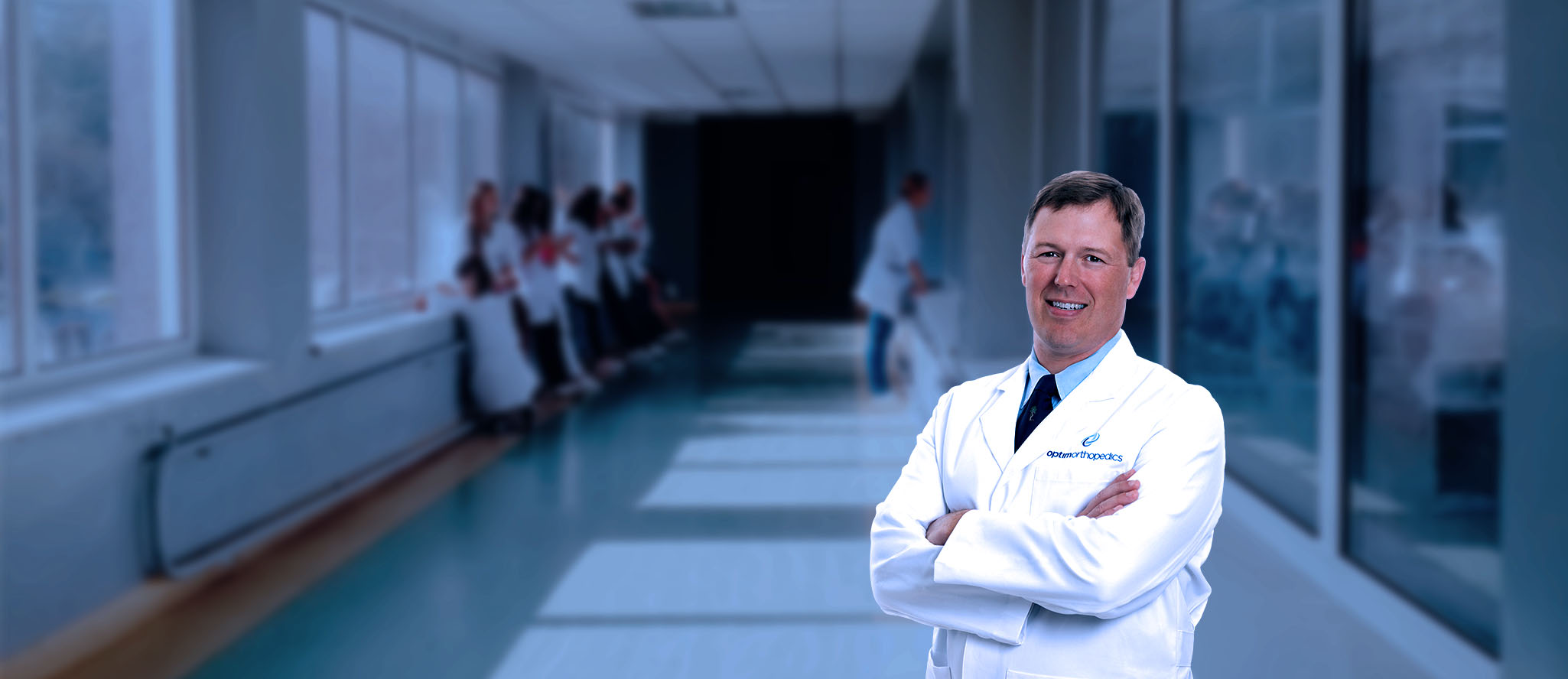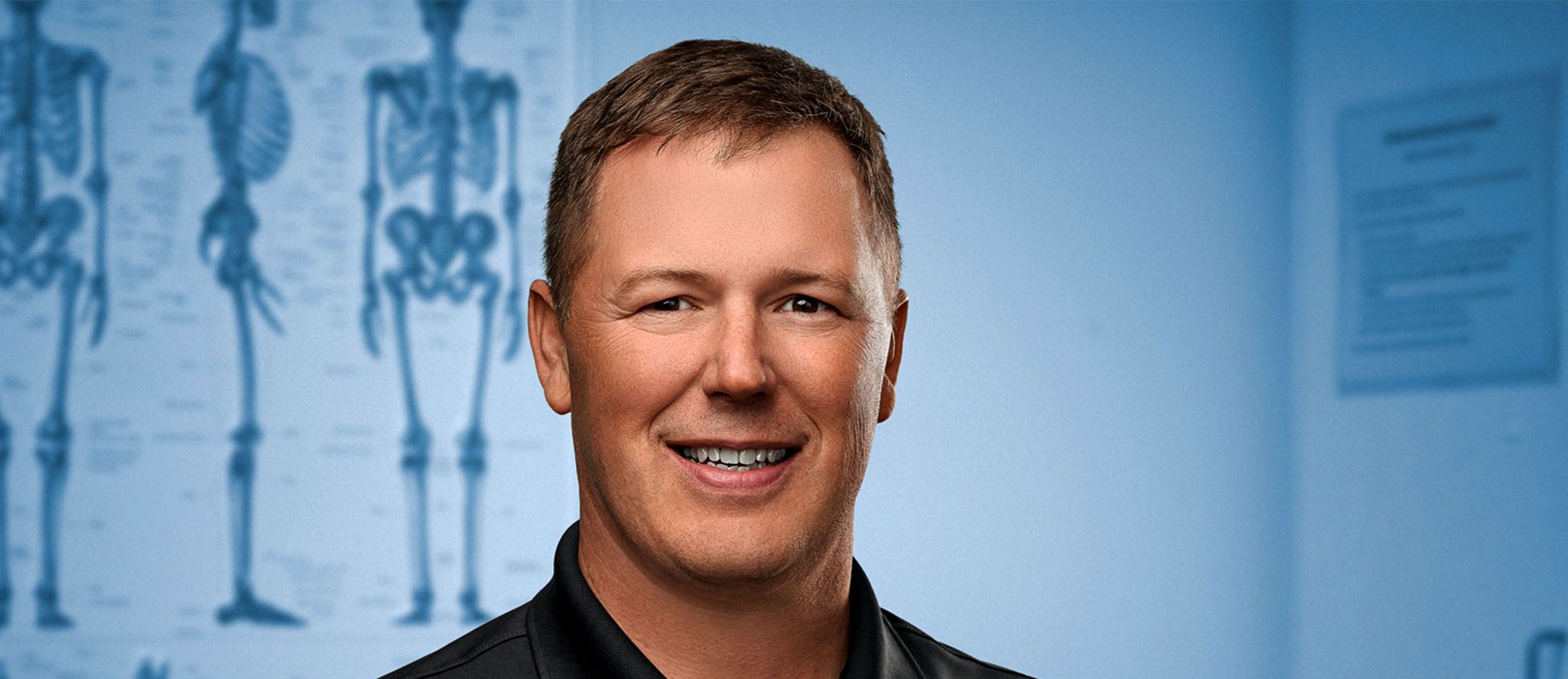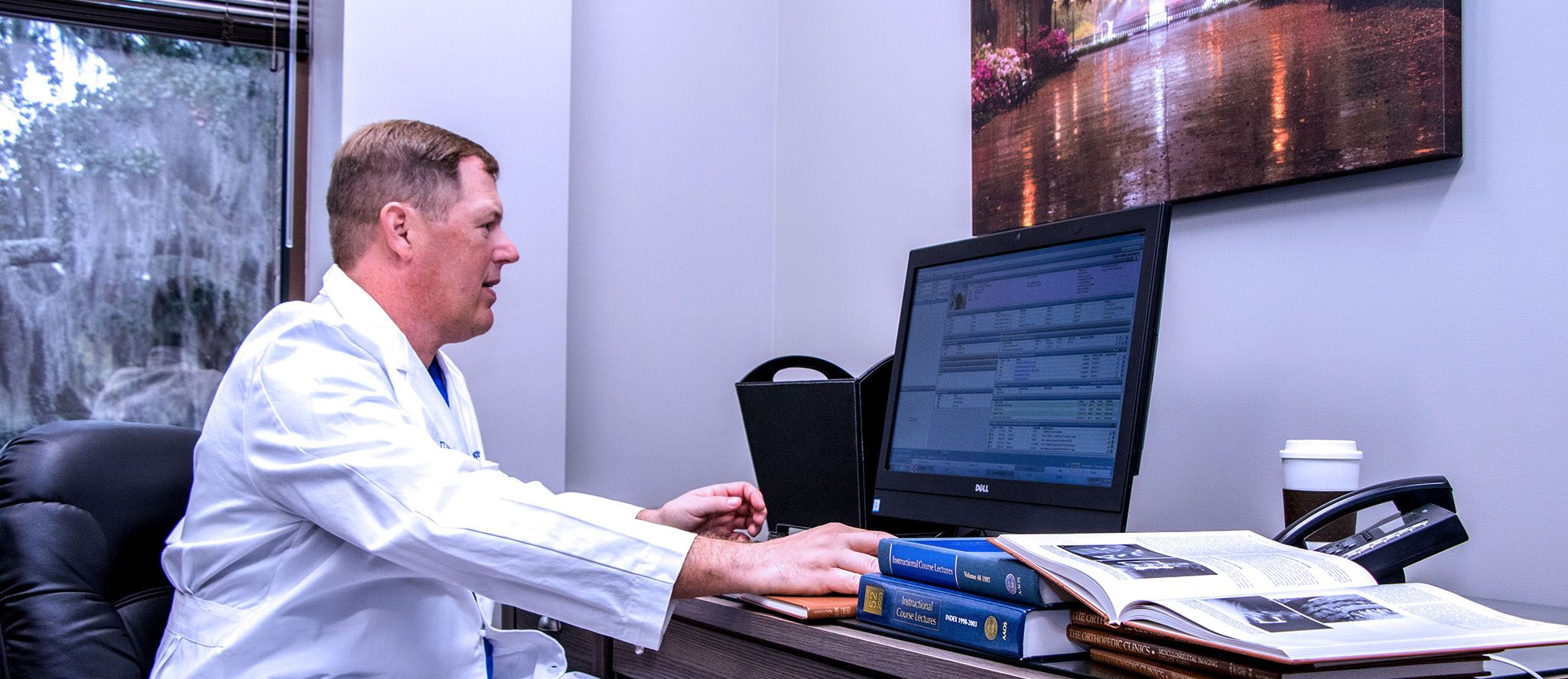Dr. Charles A. Hope II
Hip & Knee Surgeon
Hip & Knee Surgeon

Is there a typical person who comes to you for a new knee or hip?
Dr. Hope: This is the type of person who has no intention of sitting on a porch rocking chair, watching the world go by. As more people stay active, and as more people become obese, the number of those at risk rises. They end up wearing out their hips and knees sooner than they might have, but they don't want to compromise or limit their activities.
How many hip and knee replacements do you average?
Dr. Hope: Between 11 and 20 hip or knee replacements a week, about 50 weeks a year. That's between 600 and 700 joint replacements a year.
What are the benefits of anterior hip surgery?
Dr. Hope: Dr. Hope: Using anterior hip surgery, I can approach the hip joint from the front. This allows me to replace the hip without detaching the pelvic or femoral muscles. Because the gluteal muscles are not disturbed during surgery, recovery time is shortened and pain is minimized.
The first anterior hip surgery was performed in Europe in the late 1800's, but was not widely adopted due to technical difficulties. Advances in surgical techniques and instruments reduced some of the barriers to adoption of the technique. I began using anterior hip surgery in 2006 after visiting with Dr. Joel Matta, widely credited with reawakening the interest in this approach in America.

I've talked to physical therapists who have been impressed, even amazed, at the progress your patients make after knee replacement. What method do you use that shortens recovery time?
Dr. Hope:When I was a resident at Dartmouth Hitchcock Medical Center in Hanover NH back in 1993 to 1997, Dr. Philip Bernini impressed upon me the benefits of using the smallest incision possible to safely accomplish the surgical goals.
Dr. Michael Mayor taught me how to use the subvastus approach for total knee arthroplasty to replace the knee without cutting through the quad muscle.
These two approaches lead to less pain and a faster recovery time.
What's the one piece of advice you wish your patients would follow and not ignore?
Dr. Hope: To achieve optimal body weight through diet and exercise. Obesity predisposes to arthritis and lowers the chance of successful non-operative and operative treatment of the disease.
What are the top pieces of advice you give your patients in obtaining a successful outcome after surgery?
Dr. Hope: The surgeon has the main impact on the success of the surgery, but the patient has the main impact on the success of the recovery. An educated, committed, determined patient optimizes the results of his or her treatment. Learn about your disease process and its treatment. Enlist your friends and family in your recovery team. Enhance your health status by controlling your weight while ensuring adequate nutrition, maintaining your strength and flexibility, and optimizing treatment of chronic medical conditions. Prepare and plan for a superior outcome.

What would you consider reasonable expectations after surgery?
Dr. Hope:Activities like walking, cycling, swimming, golfing, or playing doubles tennis are reasonable. We discourage impact-loading activities such as jumping or martial arts. about 90% of patients find that they have good pain relief, good function, and good durability ten years after surgery.
The younger a patient is, the more seriously you have to consider non-operative treatment such as anti-inflammatory medication or activity modification.
You're a very busy surgeon. What is the role of your PA (physician assistant) as you work with each patient?
Dr. Hope: My PAs, Shannon Gulle & Kirsten Krause, work with me in clinic and the OR. During surgery they assist with exposure of the joint, protecting tissue while facilitating my performance of the procedure safely and rapidly. In the clinic they evaluate and manage patients under my direct supervision.
Are there any non-surgical procedures that you perform that patients should know about?
Dr. Hope: There is a new form of experimental treatment that I have been telling patients about; it is based on Stem Cells.
There is Lipogems, that is based on Fat Tissue. The innovators of Lipogems recognized the reparative capacity of fat and developed a procedure that optimizes the use of fat to support your body’s natural healing process.
And there is Ascent, which is an injectable solution designed to cushion, lubricate, and reduce inflammation in joints and tendons.
At the same time, it is important for the patient to rememeber that these are both experimental treatments with little no research backing them, and are not covered by their insurance.

Why did you choose this specialty?
Dr. Hope: I was injured in high school football and had a negative experience with an orthopaedist. He focused on the X-rays and ignored the human side of treatment.
What do you see on the horizon for all aspects of orthopaedic care?
Dr. Hope: The increased use of biologic treatments to enhance current surgical and nonsurgical care. Strategies such as the use of fibrin sealants, platelet rich plasma and bone morphogenic proteins as adjuncts in minimizing bleeding, infections and optimizing bone healing.
How do you personally keep up with the changes in orthopaedic medicine?
Dr. Hope: The pace of development of orthopaedic knowledge is rapidly increasing making it difficult to stay current in all aspects of the field. Limiting my focus to hip and knee diseases helps.
Monthly updates from American Academy of Orthopaedic Surgeons (AAOS) and the American Association of Hip and Knee Surgeons (AAHKS) are a mainstay. Electronic media such as email updates, weblogs and professional online discussion sites provide constant updates on breaking orthopaedic news. And, as a final check to make sure that I'm aware of new developments, I regularly participate in AAOS and AAHKS sponsored educational meetings.
What is the meaning of the tree symbol used on almost all orthopaedic pages and what does the word orthopaedics mean?
Dr. Hope: A traditional symbol of orthopaedics is the bent tree that has been braced to make it grow straight. Since orthopaedics' beginnings, its specialists have treated children suffering from spine and limb deformities. The Greek roots of the word "orthopaedics" are ortho (straight) and pais (child). Early orthopaedists often used braces or other forms of treatment to make the child "straight."